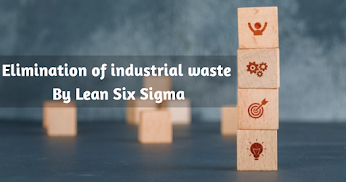How is Lean Six Sigma different from TOGAF?
Six Sigma has been transforming
businesses for a long time and it has proved in showing successful results to
the frameworks with a new phase to their entity. Still, there is confusion
among the people that remained unsolved.
Well, let’s see whether I can solve
your doubt. So, your difficulty is to understand the basic difference between
the two broad industrial upliftment concepts i.e. Lean Six Sigma and TOGAF.
In this ongoing industrial procedure,
the race-winning approach is to be taken further for an improvement in the
strategy and implement it when it comes to streamlining the business process
with a model of a good management system.
The terminologies- Six sigma and TOGAF are both having proponents and detractors who can cite several situations, but, Lean with Six Sigma is contributing more value to the industries as it can be applied in any type of business whether it is a small or big, national or multi-national framework. So, to detect the difference in this context, let’s step forward.
Are you ready to start?
OK….
Let’s understand the differences between Lean Six Sigma and TOGAF from its baseline.
What is Lean Six Sigma?
Lean Six Sigma is the methodology of process
optimization that relies on a collaborative effort of improving performance by
systematically removing the waste like defects, overproduction, excess time,
etc. A combination of Lean enterprises with Six Sigma has driven a unique
transformation where the industries focused more on customer satisfaction,
disciplined use of facts and figures, data, and statistical analysis with giving
equal importance on the proper management system, improving and revesting in
the business process.
In today’s dynamic environment, the
Lean Six Sigma approach has the potential to convert its businesses and make it
more profitable.
Therefore, to show up the unique
result in organizational management. Lean and Six Sigma principles combined to
strategies the concept of refining the value defect prevention over defect
detection with its exclusive functionalities, it drives customer satisfaction
and focuses on the bottom-line layer by reducing the variation, time, wastage
while setting up and prioritizing the working standard.
What is TOGAF?
TOGAF- The Open Group Architectural Framework is the enterprise architecture framework that provides a comprehensive approach to analyze, interpret, design, implement, and governance of enterprise architectural workflow which helps the enterprise to establish a process with several checkpoints so that there are few errors and a wider architecture base is implemented i.e. It provides the framework where technology in an enterprise can be managed well.
Some of the works it solves are- maintaining the asset by maximizing the re-use of exciting architectural components, risk management, proper support, and scrutinizing the internal and external parties’ requirements, etc.
Now, a question may arise, what is the Architecture Framework? So, An architecture framework is a technique that is being used for developing a broad range of architectures i.e. Large organizations and government agencies usually comprise multiple enterprises, and hence there are separate enterprise architecture projects. However, these enterprises may have many similarities in the system, and it has great potential for gaining by using the same architectural framework. For instance, a similar framework can be used for the development process of an architecture repository system by integrating the re-useable models by designing and working over to the baseline data.
I think by now you came through the baseline of the basic difference between LSS and TOGAF.
Now, let’s go a bit deeper then it would be more clear to you
that how LSS And TOGAF works.
How Lean Six Sigma and TOGAF works?
Lean
Six Sigma- LSS team-oriented approach has given results of
maximizing the efficiencies and improving profitability for businesses all
around the world.
Lean Six
Sigma has undergone a few key elements:
- Analysis- The tools and the techniques
used to identify the problems and solving them using the analytical
approach.
- Philosophy- A series of problem-solving
solutions that figure out the true root cause and enabling it to
implement a solution based result
- Measurement- It is important to monitor and
measure the success grid after implementing the techniques of the
problem-solving plan.
- Fueling Mindset- The way of thinking that becomes the part of this entire process needs to rely on the data and procedures to drive operational performance goals and a hunger to improve continuously.
The methodology of Lean Six Sigma will work on any type of industry, product, or
service that has a mission or vision towards success with the prominent data
structure.
The Open Group Architecture Framework- TOGAF’s technical architecture approach has the roadmap that
helps to keep the organizations on track, keeping them away from time-wasting
detours and unnecessary expenses.
TOGAF has some major components:
- Observing and planning- In this phrase, it is being analyzed and planned that, how the workflow will begin with the architecture development method.
- Techniques- The steps are
taken to implement the architecture development method(ADM) and mapping up all necessary pieces of
information.
- Continuum- It is the best
practice to re-use or re-cycle the existing resources and make a new phase
by applying the repository system.
- Practice model- It is the most crucial and result oriented phase in which it is examined that, how the entire industry practicing workflow will occur and designing the architecture thereafter.
TOGAF procedure is a bit complicated procedure that
in most cases, key stakeholders and C-level management can not always
implement is successful as they do not devote much time and effort on it but
the industries that have taken the approach have never seen a downfall in its
expansion.
I Hope, by now your doubt has been cleared. In the next part, check the differences in the concept of Lean Six Sigma and TOGAF.
Lean Six Sigma Vs TOGAF
- Focus on the
Purpose- LSS focuses on the operational approach, which aims to improve
performance by removing waste and reducing variations in the
organizations, whereas TOGAF focuses on the strategic approach where it
deals with the structures and operation of an organization with an expectation of achieving and setting up future objectives.
- Different
approaches- LSS focuses on the quantitative method where it examines the
performance and solves the problem using DMAIC
and DMADV approach, whereas TOGAF, deals
with industries and businesses using the ADM approach that surfaces in
four levels: Business, information, application, and infrastructure.
- Based on Outcome- LSS reduces the wastage involved in the production process by focusing on an improved system of business output and TOGAF, on the other hand solves the architectural based problem and enables the industry to define its principals accordingly.
The two approaches are compatible with their
specific specialization one is to solve the internal defects and the other is
for setting up the external and long-term betterment. Both methodologies give a
synergistic effect when implemented in the organization with proper planning.
Shortly, we might see that these two approaches are working together for the future
business objective and fixing up the architecture.
To know more about Six Sigma write to in-fmsixsigma@kpmg.com or reach at +91 – 998 774 4776, +91 – 999 975 5655 or +91 – 997 245 8726
Author- Puja Das



Comments
Post a Comment
If you have any doubt or suggestion, please let me know